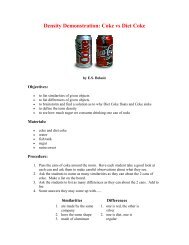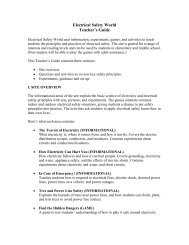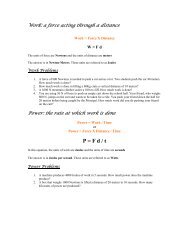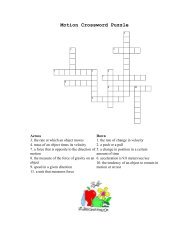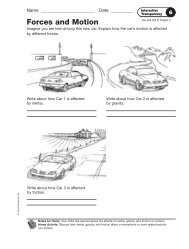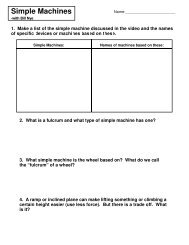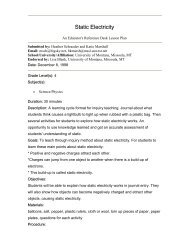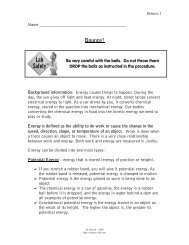Gravity By Sharon Fabian
Gravity By Sharon Fabian
Gravity By Sharon Fabian
- No tags were found...
Create successful ePaper yourself
Turn your PDF publications into a flip-book with our unique Google optimized e-Paper software.
5. The Story Behind Our Seasons<strong>By</strong> Laura G. Smith1Maybe the summer season is your favourite time of year-school'sout, the weather's warm-you might take a trip to the beach or hangout at your neighbourhood pool. The fall season usually makes usthink of leaves changing colours or the kick-off of a new footballseason. Then the winter months follow, bringing colder air and maybesnow for sledding or an icy pond for skating. Maybe spring is theseason you look forward to the most! The blossoming trees andflowers can surely brighten things up after the drab, grey days ofwinter. All four of the seasons display their own unique characteristics,but what causes the change?2There are two things that cause the change in seasons: the earth'sorbit (the path it travels around the sun), and the tilt of the earth'saxis (which is at an angle of 23.5 degrees).3It takes the earth one year to make a single orbit (or revolution).At the same time the earth is revolving around the sun, it is alsospinning (or rotating) on its axis. The earth completes one rotationevery 24 hours. (Read about the earth's 24 time zones in "It's AboutTime.")4If you could stick a huge straight pin down through the North Poleand have it poke out through the South Pole, the pin would representthe earth's axis, but it would not be straight up and down. It wouldactually be slanted at an angle. The angle of the earth's axis is whatcauses different seasons. In summer, the earth is tipped toward thesun; in winter, it's tipped away. When it is summer in the northernhemisphere, it is winter in the southern.5If the earth's axis were not tilted, but straight up and down (orvertical), each location on earth would be exposed to a constantamount of sunlight during the entire year; there would be no changesin temperatures and no seasons! The regions near the equator wouldreceive the most sunlight (much like they already do); the land at thenorth and south poles would receive almost no sunlight, so it wouldalways be dark and winter-like. The regions between the equator andthe poles would be warmest by the equator and then gradually cool offas we moved towards the poles. None of these regions would have achange in seasons. For example, if the weather in South Carolina wasin the 70's during the month of April, it would also be in the 70's inAugust or December or any other month of the year.6On the other hand, if the earth were tilted at an angle much



